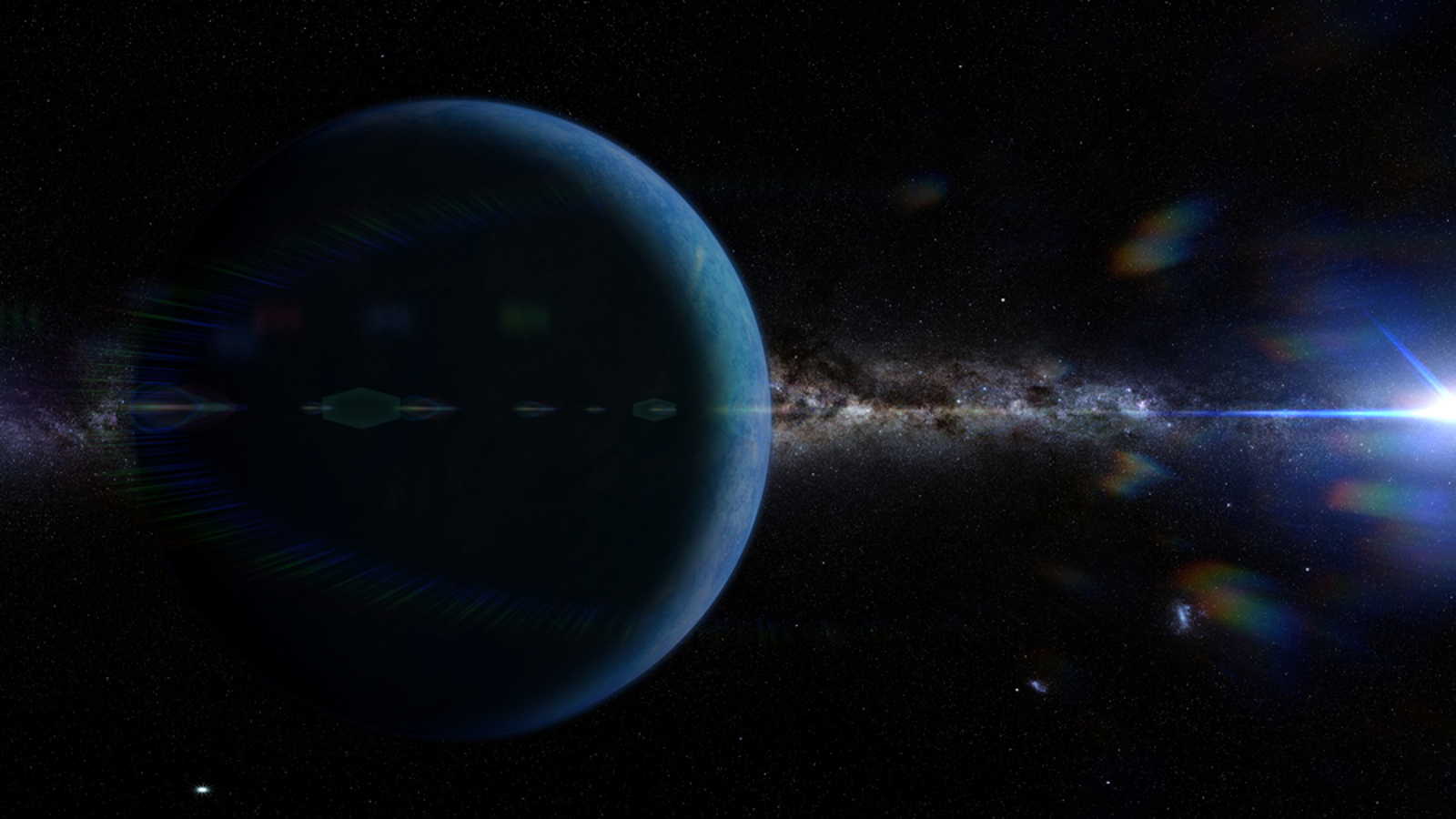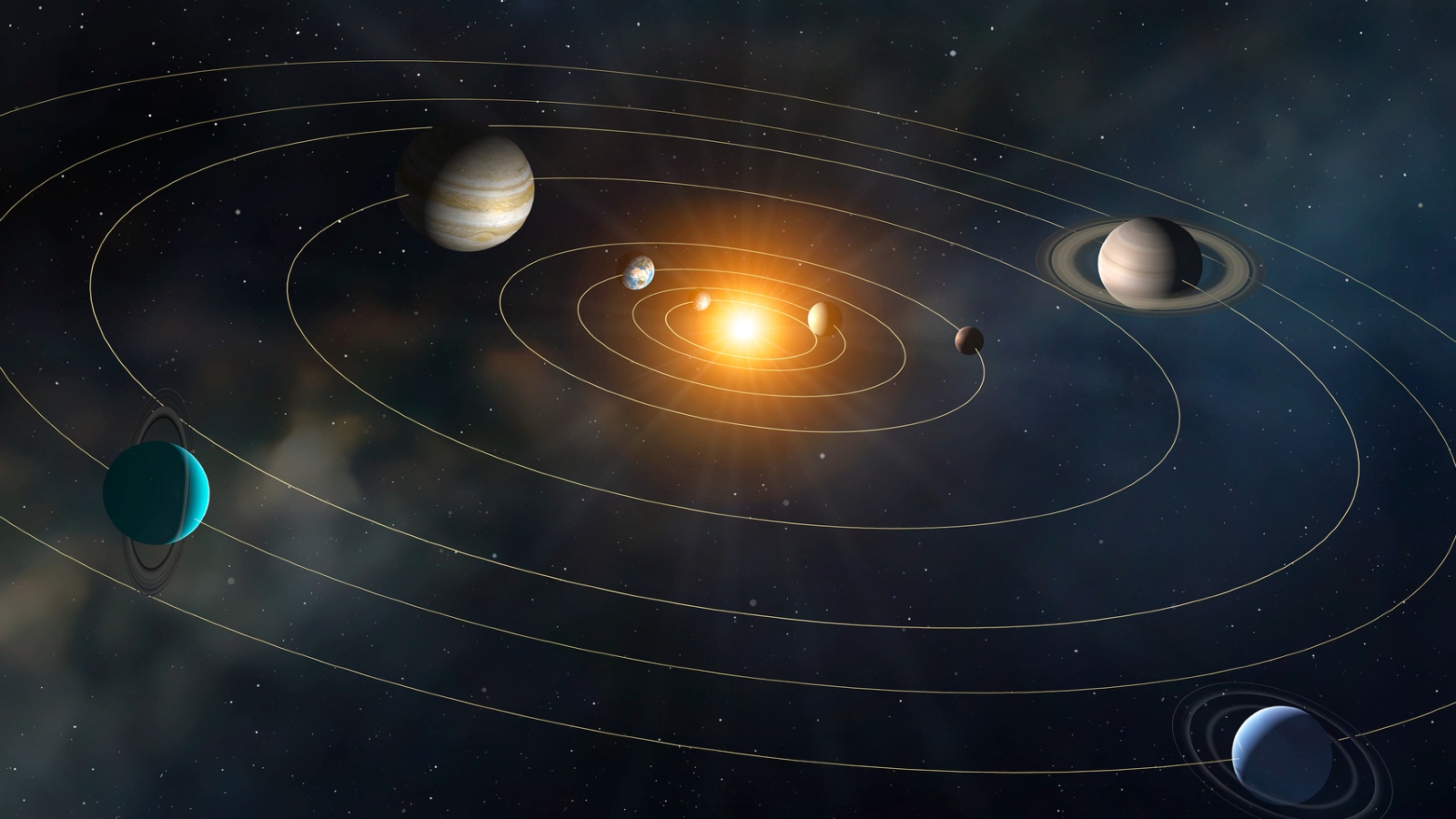Astronomers narrow down where 'Planet Nine' could be hiding by playing massive game of 'connect the dots'
The researchers who originally proposed the Planet Nine hypothesis have narrowed down where the giant elusive world might be hiding, after carrying out an exhaustive sweep of the theoretical planet's orbital pathway.

Scientists have narrowed down the likely hiding place of the elusive "Planet Nine," after ruling out more than three-quarters of the hypothetical world's suspected orbital pathway. In a new study, the researchers — who have been looking for the planet for almost a decade — said they believe they could find the elusive world in the next few years.
Planet Nine, also known as Planet X, is a theoretical planet that is rumored to exist in the outer solar system. The Planet Nine hypothesis was first proposed in 2016 by Caltech astronomers Michael Brown and Konstantin Batygin. The pair put forward their hypothesis after other astronomers detected a series of objects in the Kuiper Belt — a large disk of asteroids and comets beyond the orbit of Neptune — that had unusually warped orbits around the sun. After analyzing these objects, Brown and Batygin decided that only a massive planet's gravitational pull could explain the orbital anomalies.
In the years since, Brown and Batygin (along with others) have filled in more pieces of the Planet Nine puzzle: The enigmatic entity is likely around seven times more massive than Earth, which would make it the fifth-largest planet in the solar system, and it's probably located somewhere between 500 and 600 astronomical units from the sun (between 500 and 600 times farther away than Earth is from our home star).
However, there is still some uncertainty about Planet Nine's eliptical orbit, which could take anywhere between 5,000 and 10,000 years to complete and is likely slightly tilted compared with the orbits of the known planets, or where it is in its orbital cycle. As a result, all previous attempts to find the planet have fallen short.
In the new study, which was uploaded to the preprint database arXiv on Jan. 31, Brown, Batygin and Matthew Holman, an astrophysicist at Harvard University, used data collected by the Panoramic Survey Telescope and Rapid Response System (Pan-STARRS) observatory in Hawaii to search for Planet Nine along and around its suspected orbital pathway.
The trio analyzed 78% of the region where Planet Nine is likely to be; the rest of this space currently lies too far away for Pan-STARRS to see it clearly. Yet Planet Nine was nowhere to be seen. (These findings have not yet been peer-reviewed.)
"We have ruled out most of the places where the planet could be," Brown told Live Science. "Now we have to do the much harder job of searching the area that is further away."
Sign up for the Live Science daily newsletter now
Get the world’s most fascinating discoveries delivered straight to your inbox.
Related: 10 out-of-this-world solar system discoveries made in 2023

Using the Pan-STARRS data, the team scoured Planet Nine's orbital pathway at monthly intervals. The goal was to detect bright objects that moved positions every month.
This may sound straightforward, "but there are many things in the sky that change month after month," such as asteroids and comets, Brown said. "As a result, it's like playing a game of connecting the dots in a very computationally intensive way."
To ensure they didn't miss Planet Nine, the team added more than 50,000 fake Planet Nines to the data. They "spotted" 99.9% of these decoy planets, meaning the chances of the team having missed Planet Nine in the search region are "really small," Brown said. As a result, the team thinks Planet Nine is somewhere in the most distant 22% of its proposed orbital pathway.
Brown and Batygin are currently working on the "next level" of the survey by using data from the Subaru Telescope, also in Hawaii. This data should also be able to help them sort through most of the space that they have been unable to reach, as well as increase their certainty that Planet Nine isn't in the space already surveyed.
If that fails, the upcoming Vera C. Rubin Observatory, which is due to switch on in 2025, could help find the planet.
"Within a year of that telescope operating, I think we'll find it," Brown said.

Harry is a U.K.-based senior staff writer at Live Science. He studied marine biology at the University of Exeter before training to become a journalist. He covers a wide range of topics including space exploration, planetary science, space weather, climate change, animal behavior and paleontology. His recent work on the solar maximum won "best space submission" at the 2024 Aerospace Media Awards and was shortlisted in the "top scoop" category at the NCTJ Awards for Excellence in 2023. He also writes Live Science's weekly Earth from space series.










